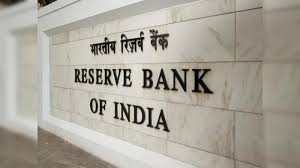RBI’s New Framework for Converting FPI Holdings to FDI
The Reserve Bank of India (RBI) recently introduced a new framework to facilitate the conversion of Foreign Portfolio Investment (FPI) holdings into Foreign Direct Investment (FDI). This move aims to attract more long-term investments into the Indian economy and support the growth of businesses. Under this new framework, FPIs can convert their holdings in Indian companies to FDI after meeting specific conditions set by the RBI. This policy change is expected to provide more flexibility for foreign investors and encourage them to contribute to the Indian economy more sustainably.
What is the Difference Between FPI and FDI?
Foreign Portfolio Investment (FPI) refers to the investment in the financial assets of a country, like stocks and bonds, by non-resident entities. These investments are usually short-term in nature. On the other hand, Foreign Direct Investment (FDI) involves investing in physical assets, such as setting up businesses or acquiring a controlling stake in existing companies, representing a long-term commitment to the country’s economic growth.
The New Framework and Its Benefits
The RBI’s new framework allows foreign investors to convert their FPI holdings into FDI, provided they meet certain conditions, such as holding the investment for a longer duration and not engaging in speculative trading. This change is expected to provide stability to India’s financial markets, as it encourages more long-term investment, which can lead to increased employment and economic growth. Additionally, this shift will help in boosting India’s infrastructure and technological development by channeling foreign funds into key sectors.

Why This News is Important
Boosting Long-Term Investment
The introduction of the new framework is a significant step toward encouraging long-term foreign investments in India. By converting FPI holdings to FDI, the government is ensuring that foreign capital not only flows into Indian markets but also stays in the country for a longer period, thus contributing to the overall economic development. This aligns with the government’s ‘Make in India’ initiative, which encourages foreign investors to set up production facilities in India.
Stabilizing the Financial Markets
India’s financial markets have often been subject to volatility due to the short-term nature of FPI investments. The new RBI framework is designed to bring in more stable and long-term capital, thereby reducing the pressure on the Indian Rupee and improving the overall market sentiment. Long-term FDI is also expected to provide more job opportunities and enhance the productivity of sectors that receive foreign investment.
Historical Context: The Evolution of Foreign Investment in India
India has been attracting foreign investment since the liberalization of the economy in the 1990s. Initially, the flow of foreign investments was limited to FPI, but over time, the Indian government introduced various measures to encourage FDI, recognizing it as a key driver of economic growth. The new RBI framework for converting FPI into FDI is the latest in a series of reforms aimed at liberalizing the investment environment. Previous efforts, such as increasing the FDI cap in several sectors and improving the ease of doing business, have laid the foundation for this new framework.
Key Takeaways from RBI’s New Framework for Converting FPI Holdings to FDI
| S.No | Key Takeaway |
|---|---|
| 1 | The RBI has introduced a framework that allows FPI holdings to be converted into FDI. |
| 2 | The new policy encourages long-term investment, promoting stability in India’s financial markets. |
| 3 | Foreign investors can now convert their investments into physical assets, contributing more to India’s economic growth. |
| 4 | The framework aligns with India’s ‘Make in India’ initiative, boosting domestic manufacturing and infrastructure. |
| 5 | This move is expected to reduce market volatility and improve the Indian economy’s resilience. |
Important FAQs for Students from this News
What is the new framework introduced by the RBI?
- The RBI has introduced a new framework that allows foreign portfolio investors (FPIs) to convert their holdings into foreign direct investment (FDI) in Indian companies, subject to specific conditions. This move aims to encourage long-term investments in the Indian economy.
How does this framework benefit the Indian economy?
- By converting FPI holdings to FDI, the framework encourages long-term investment in Indian markets, stabilizes the financial markets, and supports sectors like infrastructure and technology, leading to overall economic growth.
What is the difference between FPI and FDI?
- FPI (Foreign Portfolio Investment) involves short-term investments in financial assets like stocks and bonds, whereas FDI (Foreign Direct Investment) entails long-term investment in physical assets such as businesses or production units in the country.
How does the conversion of FPI to FDI impact foreign investors?
- The conversion provides foreign investors with more control over Indian companies, encouraging them to invest in key sectors with a long-term perspective. This shift aligns with India’s “Make in India” initiative and promotes stable growth.
What conditions must foreign investors meet to convert FPI to FDI?
- Foreign investors must hold the investment for a longer period and refrain from engaging in speculative trading. These conditions ensure that the investment is more stable and contributes to sustainable economic growth.
Some Important Current Affairs Links


















